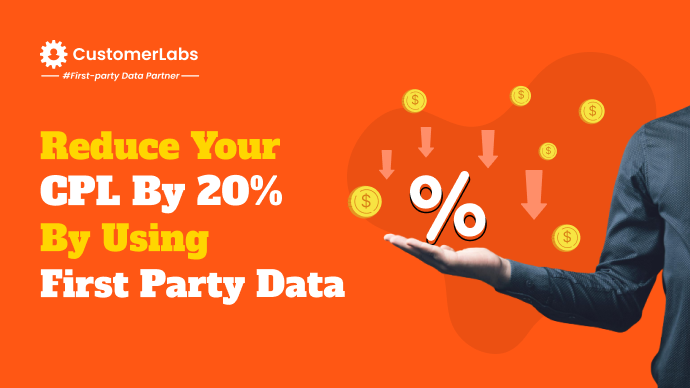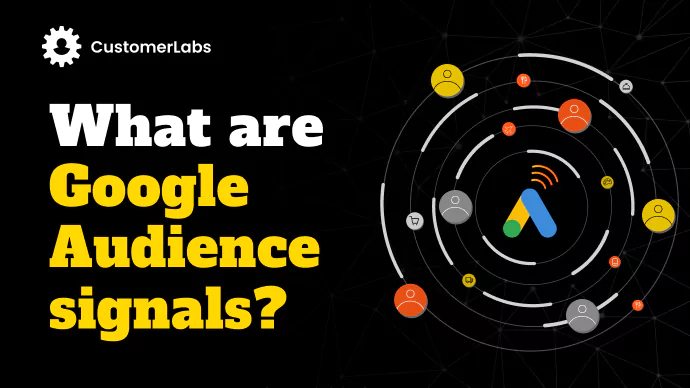An average marketer focuses only on bringing in new customers. Legendary marketer focuses also on increasing the Customers’ Lifetime Value (LTV or CLV). Do you want to be an average marketer or be in the cream (top level) who focuses on increasing customer lifetime value?

Before diving into the intricacies, let us know the basics first.
What is Customer Lifetime Value (CLV/LTV)?
Customer Lifetime Value is the total profit a customer provides throughout their journey with your business. It starts adding value with time and purchases of your customer. Higher the LTV, the better for the business.
Lifetime value = (average order value x retention period x number of transactions in that retention period). Now multiply this value by the profit margin to get the CLV.
Do not go by the complex formulae and confusing statements. Let us understand the LTV in simple terms.
I’ll give you an example of LTV in eCommerce first
Let us say that five years ago, Alex purchased goods worth $250 from your store, then 2 years ago he bought $460 worth of goods, and finally, in the last 1 year to date, he purchased goods worth $290. Now, the lifetime value of Alex is 250+460+290 = $1000.
Example of LTV in SaaS:
It is interesting to know how LTV works in SaaS. We calculate the LTV-CAC ratio to uncover if our campaigns are successful. Plus, in SaaS, you have the advantage that it would mostly be subscription-based. So, you calculate your customer LTV using the average retention period and multiply it with the average monthly cost. That gives the LTV of your average customer. This is both – average predicted LTV and also historical LTV.
What is Predicted LTV?
Predicted LTV is the lifetime value of your customer predicted based on the historical LTV. And historical LTV is the lifetime value of your customer until today. You can use machine learning models to assess and analyze your complex data to predict the LTV of your customers using the recency, frequency, monetary value model (RFM) or any other model that suits your business.
Illustration of LTV in Lead Generation business:
For lead generation business, the LTV varies from business to business. For example, if you take a real estate business, on an average, a single customer might not purchase a home more than once. In that scenario, the LTV of the customer is equal to that single purchase. But the value will be high as the commission percentage the real estate broker gets is high. Same is the case for a car showroom. A single customer might not purchase a car more than two times or three times, that too in their whole lifetime. Therefore, the LTV calculation must be kept in mind to not let CAC be higher than the CLV.
How understanding Customer Lifetime Value helps businesses?
Every business has a cost acquired for every single customer which is called CAC (Customer Acquisition Cost) and to make the business profitable, the net profit or revenue you generate on each customer (CLV) must ideally be greater than the CAC.
Understanding the customer lifetime value (CLV) is important for your business because:
- It helps you with insights on how much you can spend on acquiring new customers (CAC).
- When the enormous data is combined, you get an idea of how much an average customer spends on an average in their lifetime.
- Help businesses identify high-value customers and train the ad algorithms using these customers’ profiles.
- Identify the products that customers with a particular lifetime value purchase, and segment them separately based on both – historical LTV and predictive LTV. For example, all those who have an average LTV of less than $1800 can be targeted with a few products of a certain range you think they would not think twice to purchase.
- Helps understand who the most profitable customers are.
- Predict the approximate revenue generation in a year by your business.
- Work on marketing strategies based on the trends of the customer LTV.
How to increase your customer lifetime value?
You can improve your CLV using many proven strategies and techniques. Let us list down the basic ones first and then move on to understand how to increase your LTV by engaging customers across channels.
The only thing that helps you increase customer lifetime value is – gaining customers’ trust and loyalty. To gain your customers’ trust, you need to provide your customers with a seamless experience by utilizing multiple channels in the right way.
Here are a few ways to not only increase LTV by engaging customers across channels but also to convert those users who are on the verge of converting, to increase your conversion rate.
Increasing CLV using Email marketing platforms
Engaging the customers over email with a personalized message is the best way to increase the conversion rate and eventually even increase the customer’s lifetime value. Every user that lands on your website, performs various actions, including some of the most important actions like – add to cart for eCommerce, submit the form or click on download a whitepaper for lead generation business, and more.
These users might or might not share their email addresses or other personally identifiable information. For those users who shared their email addresses, you can reach them out through email with personalized mails, and help them take that action to get desired results.
Without deviating from the topic, let us stick to increasing the lifetime value of your existing customers using the first-party data you collected.
Strategies to engage customers on email to increase lifetime value
- Identify and segment users who buy your products once in 6 months, and send them emails with offers from your store every 3 months, to reduce their purchase frequency to less than 6 months.
- Segment the users based on the products purchased and run cross-sell and up-sell strategies emails. For example, you can segment those who purchase the same products every month or at a specific frequency and apply up-sell strategies.
- People who have added to their cart but did not purchase can be segmented and sent emails with those products, reminding them to complete the purchase.
- Most users add products to their wishlist but forget to purchase them. Remind them of those products through captivating and engaging emails.
- Encash referral programs over emails as people tend to buy products based on recommendations from their friends or family.
- Make the purchase experience seamless for the users to boost their satisfaction, making them come back to you to purchase the products.
- Create content around your products and spread valuable information with facts to your customers to gain trust.
- Rewards are a good way to bring back customers and make them purchase more, increasing their lifetime value. For example, let’s say a customer has purchased with a cart value of $95. After they make a purchase, send them an email thanking them for the purchase and put forward an offer saying, “Get 10% off using this coupon for your next purchase of minimum value of $125”. This will increase their cart value by $25 and they would not mind.
WhatsApp marketing to increase customer lifetime value
With the increasing usage of WhatsApp, marketers have shifted their focus to reaching out to their customers on WhatsApp. It is because
- WhatsApp campaigns have higher open rates (70 to 90%), compared to emails (20 to 40%).
- WhatsApp has conversational, two-way communication, compared to emails. People feel more personally connected on WhatsApp and open it frequently compared to their emails.
- More engaged conversations on WhatsApp than on emails.
WhatsApp API helps businesses to connect and engage with their customers through WhatsApp just like how they do with emails. Segment your customer data, and sync it through WhatsApp API for engaging your customers on WhatsApp.
Strategies to engage customers on WhatsApp to increase lifetime value
- Along with order confirmation, and shipment updates, send them loyalty bonus points that help them encash in their next purchase.
- Share off-season sales to make your customers purchase more frequently than they do.
- Use the ever-green cross-sell and upsell strategies similar to email marketing on WhatsApp.
- Re-engage the cart abandoners with emails at a scheduled frequency.
- Allow users to send messages to collect first-party data (their preferences, choices, and other information you need to understand them) and run personalized WhatsApp campaigns.
- Engage users to make them purchase right within WhatsApp and push that data back into your First Party Data Ops to have these touchpoints counted in the customer journey.
- For users who have email open rates less than 20% can be segmented and targeted with WhatsApp messages.
- Use all the strategies you would have implemented for the email marketing campaigns like the referral programs, etc., to engage your customers to increase LTV using WhatsApp.
Ideal way to engage your customers to increase LTV
You have seen email marketing strategies and WhatsApp marketing strategies to engage your customers to increase their LTV. But which is the best strategy to engage with your customers and increase LTV?
Ideally, you have to engage with your customers in a way that they do not get pissed off and irritated by your message/email/ad. That not only helps you retain them but also stops them from unsubscribing from your emails or WhatsApp messages.
Tips to engage customers to increase lifetime value / conversion rates
Below are some tips that help you segment your audience data and run remarketing campaigns to engage with your customers for increased engagement, leading to an increase in lifetime value, and boosting your overall revenue.
Email or WhatsApp or Ad Platforms?
We have seen how WhatsApp campaigns have higher open rates compared to emails. But does that mean you have to use only WhatsApp campaigns? No. Not at all. Every user has their preference, plus, WhatsApp remarketing is costly compared to email or ad platforms. Therefore, you need to have a strategy to optimize your budget while getting the most out of it.
Here’s how you can do it – If someone does not open your last 10 emails in the last 30 days, then have a cool-down period and exclude them from your email campaigns. Start targeting them on Ad platforms for the next 30 to 90 days. After that, if they still do not take any action, reach out to them using WhatsApp. Remember, each message must be unique in its own way to avoid the fatigue of the creative or messaging. Plus, every message must feel personalized to the user. Doing so will help you increase your customers’ engagement leading to an increase in their lifetime value.
Targeting unknown users
Around 98% of your website visitors do not log in while using, leaving no known data behind for you to leverage them on remarketing campaigns across email or WhatsApp. To activate these anonymous website visitors, you need to sync this first-party data with ad platforms like Google Ads, Meta Ads, etc., and run personalized ads. This personalized scale of retargeting helps you increase your conversion rates and eventually, also increase your customer lifetime value because not all your customers need to browse your website always by logging in to your website. This is where a 1PD Ops can help you – a 360-degree customer profile using identity graph technology and advanced identity resolution technology.
Omnichannel marketing
When you connect a First Party Data Ops, all your customer touchpoints will be available to you. This helps you prevent reaching out to the same customer with irrelevant messages. For example, for someone who added the products to the cart but did not purchase, you send a personalized email and they make the purchase. Now, if you show the same product to the same customer in an ad on Meta, they will not make the purchase and feel irritated because they already purchased your product.
To have a seamless experience for your customers, take the omnichannel approach and boost your trust among them. So, for the above customer, you can instead show a thank you message directing them to make another purchase leading to increase in customer LTV.
Loyalty programs and referral programs
To engage your customers effectively, having loyalty programs and referral programs in place is mandatory as it boosts your customers’ trust and loyalty, increasing not just your customers’ lifetime value but also bringing in more new customers without much of a cost linked to those customers’ acquisition.
Early access and offers on new launches
Give your customers early access to your products and services, or have exclusive offers for early bookings for your customers. This makes them feel you offer exclusive personalized messages for them, building trust with your brand, and eventually increasing lifetime value.
Known first party data for hyper-personalization
Use first-party data such as birth dates, and marriage anniversary dates, to hyper-personalize your emails to the customers and help them feel loved and cared for. By doing so, you can also increase their cart value and lifetime value with the right strategies.
Conclusion: Engage to elevate – Increase your LTV using multi-channel approach
Remember, customers aren’t just statistics; they’re individuals waiting to be valued and heard. Engaging with them with personalized messaging across various channels fosters genuine connections, builds trust in your brand, and therefore, unlocks the path to increase customer value. Implement the strategies discussed by embracing first-party data, and watch your Customer LTV soar!
The journey to exceptional customer experiences begins with you starting to adopt the right partner for your first-party data operations in the era filled with data privacy.






